Section One: Music and Modernity
Max Weber – The Rationalisation of Music
Weber analysed music in two ways. On one level, music was an artefact of the rationalisation process that brought on the development of capitalism in the West. On another level, he viewed music a deeply meaningful part of society’s culture. Weber incorporated music into his grand theory of rationalisation. Central to his work, rationalisation is a process of modern, industrial society, manifested through the growth of bureaucracies and the efficient and calculated organisation of human activity (Turley 2001, p. 633). Weber examined music as an irrational piece of culture production that was being made rational through organisation and standardisation. According to Weber, the two key moments that defined music’s rationalisation were the developments of modern instruments and modern music notation. These developments were apparent in the historic rise of the Roman Catholic Church, where the music the Church produced was greatly influenced by the rationalising and bureaucratising of the Church itself (Turley 2001, p. 634; Weber 1946, p. 224). Eventually, this process was responsible for the music conventions associated with European classic music that are still prominent in the production of music today. Webers refers to monastic choirs as the first organised entities to experiment with primitive chordal harmony through the Gregorian chant. Chant, pitch, meter and note length were given a written symbol that was composed for different vocal ranges of the choir. These written notes were cited as the beginnings of harmonic and music theory (Turley 2001, p. 639). In order to employ standardised notations, musical instruments were constructed in a standardised manner. To Weber, the standardisation of notational systems, structured harmony, organised choirs, ensembles, orchestras and the standardised construction of instruments were all rational outcomes and developments of organised society (Turley 2001, p. 639; Weber 1946, p. 71).
Weber provides an analysis of the rational history of the piano, where he considers economic, cultural, social, technical and climatic factors in his analysis (Turley 2001, p. 638). Although invented in Southern Europe, the piano did not diffuse as quickly there as it did in Northern Europe. According to Weber, this was due to the climate, where Northern Europeans were climatically housebound and house-centered. The piano was quickly integrated into middle class culture for household entertainment and as a status-level piece of furniture. In an era where rational capitalism encouraged the consumption and production of music, mass production and music publishers rushed to meet the high demand of pianos at the time. In the nineteenth through to the early twentieth century, Western countries and their colonies sought what was perceived as a cultural figure piece. Steinway, America’s first industrial piano manufacturer, pioneered iron frames due to the climatic requirements of tropical clients as wood frames would decay in the humid environments of the tropics. Today, iron frames are a part of the standard manufactured piano design. According to Weber, these historical advances of the piano were symptomatic of the rationalisation process at work in capitalist societies (Turley 2001, p. 638).
Society’s Reaction to Jazz Music

One style of music, particularly interesting for its unique characteristics and unconventional adoption into society, is jazz. While the definition and explanation of jazz-style music varies among musicians and music enthusiasts alike, Ulanov (1954, p. 269) presents a fairly accurate definition that survives the many adaptations of jazz throughout the decades: “a new music of a certain distinct rhythmic and melodic character, one that constantly involves improvisation of a minor sort in adjusting accents and phrases of the tune at hand, of a major sort in creating music extemporaneously, on the spot”.
It is widely accepted that jazz music originated as amalgamation of traditional African and European musical elements. Often, jazz music is heavily associated with New Orleans, due its role in uniting and spreading cultures as a major cultural port of the USA. It was in New Orleans that jazz music, and the cultures that influences it, were fostered and spread.
On its emergence into White American culture in the early 1900s, jazz music was largely rejected by the wider society. This was due to multiple factors that involved both the individuals who performed jazz music, and the perceived messages it represented. Jazz music broke all the rules of traditional music. It swapped structure with improvisation and tradition with originality, and was considered to challenge the conservative conventions that dominated white culture in America at the time. It is interesting to note that jazz music’s theme of rejection did not solely begin and end with theoretical structures, but transcended into an art-form that challenged societal norms also.
Margolis (1954) summarised the idea of jazz being perceived as an expression of protest and a threat Puritan principle and thus its ultimate rejection by the dominant American majority:
“jazz as the music of the Negro represented a protest against an existing oppressive culture; that it therefore became the music attractive to those social elements in protest; that through its resultant associations in Storyville, jazz came to symbolize the repressed Id drives; that because of this symbolization and its role as a cultural protest, jazz is continually rejected by the mass representation of the Superego, the culture”(p.276)
To further examine the role of jazz and its musicians in society, Merriam and Mack (1960) discuss the cyclic nature of rejection and isolation felt by jazz musicians from the wider society:
“the public’s impression of the jazz musician is reinforced by the musician’s behavior; at the same time, the musician’s behavior is, to a considerable degree, caused by the attitude of the public toward him.’ Finally, it remains to be noted that the general attitude toward the jazz musician and his music extends to his public as well, and thus the entire jazz community is involved in a basic rejection by the society at large.”(p.214)
Ultimately, at the time of jazz music’s first inception into white America, jazz musicians and communities experienced distinct isolation from the larger society, as a result of the perceived defiant message of the music.
Music as High Culture: Opera
Adorno, when discussing popular culture also has a big emphasis on classical music as being ‘serious music’. Opera uses classical music which is music that is complex and can only be enjoyed by the trained ear (Witkin 2003), therefore it is not easily accessible to all, which is in sharp contradiction to pop music. A main characteristic of pop music is how is it produced so that it can easily be consumed by any listener.
Adorno uses the term high and low art to explain the differences between popular music and serious music. Low art” is defined here as “Cultural forms that are compensable to the average person” (Holze 2005, p2),which is aimed at any form of popular culture. However, “High art” is therefore considered to have some sort of special importance, to be understandable only to an “educated” and “sophisticated” elite.
This inaccessibility by the majority creates a kind of ‘elite culture’ around classical music. There are many reasons why people go to the opera and showing where they are in the cultural hierarchy is one of them. Operas are usually expensive and grand, also many operas are sung in a different language, therefore only people who have both money and have studied music and or foreign language will be able to properly enjoy and understand their significance.
Adorno comes back to the point that, pop culture is easily consumed by its audience, “With the beginning of mass media all those new media like movies, photographs, pop music and later television were entitled popular culture because they were consumed by so many people regardless to education and social environment”. (Holze 2005, p2). While not being a main focal point of Adornos work, this then brings up the idea from another sociologist Pierre Bourdieu, and his work around social status and cultural consumption.
Bourdieu told us that social class or status is very closely determined by cultural consumption. “Social classes display different patterns of cultural taste and consumption as part of their characteristic lifestyle” (Tan & Goldthorpe 2007), what this means is that people from certain social classes will tend to show a similar pattern of the things in which they like or consume, and adversely, dislike and avoid.
Bourdieu discusses the fact that in all cultures, it is not enough to be a part of a class but you must also be perceived as belonging to that class by those around you. “A class is defined as much by its being-perceived as by its being, by its consumption” (Bourdieu, 1984) Therefore, Opera then becomes one of the cultural tools an individual can use to define his or her status and to show those around you that you are from the ‘high class’. An Individual from a high class should then consume many of the things that distinguishes them from the rest- expensive clothes, cars, house, and going to opera or ballet.
In conclusion, Opera is not just music. It is part of an elite culture and is a cultural tool that people can use to show their ‘cultural capital’ to differentiate themselves from other classes.
Section Two: Music and Capitalism
The Culture Industry
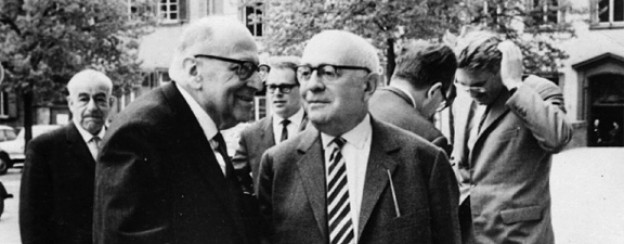
Andrew McLeod
Adorno and Horkheimer, in their chapter, The Culture Industry: Enlightenment as Mass Deception, describe the music industry from the perspective of capitalism. Adorno and Horkheimer come from the critical theory tradition that stems back to Marx. The critical theory tradition asks the fundamental question: why was Marx wrong? Exploring psychoanalysis and philosophy, critical theorists explore how capitalism is embodied in individuals and how it manifests in society. One of the most important books of critical theory comes from Adorno and Horkheimer and their text, Dialectic of Enlightenment. In their chapter ‘the culture industry: enlightenment of mass deception’, Adorno and Horkheimer explore how people are influenced by capitalism through the mass production of entertainment through film, radio and music. Through culture industries, individuals are influenced by the ideology of capitalism through myths created to support the commercial interests of the ruling elite. Adorno and Horkheimer set out to describe production and consumption of art through mass production that produce standardisation of successful formulas. In regards to music, this is reflected in the structure of pop music. Adorno and Horkheimer argue that the logic of capitalism, and companies who monpolise the culture industry, dominate the production and consumption of music.
Production of Music
For Adorno and Horkheimer, the production of music is understood through the mode of production, mass production and commercialisation of music to make profit. The culture industry argument was written over sixty years ago, in a time when the production of music was heavily centralised and the industry had a monopoly of technology and distribution through radio and vinyl (Adorno & Horkheimer 1993, pp. 1-2). Adorno and Horkheimer (1993) argue that standardisation and mass production creates an artificial form of art, or in this case music, where once published, and incomes earned, any kind of social benefit is removed (p. 1). The sole purpose of the Culture Industry is to release a disposable product purely for commercial ends. The ideology of music production is seen as a business that justifies the “rubbish they deliberately produce” that enters into repetition processes (Adorno & Horkheimer 1993, p. 1). Adorno and Horkheimer (1993) describe the process as a business structure, as management having complete control over the production of music to make returns (p. 1). This vision of production is similar to Fordism. Furthermore, the culture industry creates an illusion of choice between artificially different songs, following similar structure, through “mechanical production and reproduction” where change outside of this formula is prevented (Adorno & Horkheimer 1993, p. 8). Under these conditions is a constant process of reproduction of the same thing (Adorno & Horkheimer 1993. p. 8).
Consumers of Music
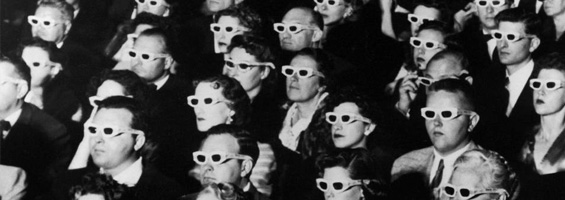
Adorno and Horkheimer (1993) argue with the emergence of leisure time outside of the eight hour work day and the the weekend opened up a market to commercialise entertainment (p. 9). However, Adorno and Horkheimer (1993) argue this relationship between producer and consumer of music is one of subordination and manipulation (pp. 1; 3). Individuals are described as passive consumers who have no control over what they consume (Adorno & Horkheimer 1993, p. 4). Through commercial interests and mass production, Adorno and Horkheimer argue, the production of music is reduced to “prearranged… mockery” of high art; heavily formalised, identical in structure, and dispersed throughout the mass population (1993, p. 4). Individuals do not resist because of the culture industries control over their individual consciousness (Adorno & Horkheimer 1993, p. 1). The mass population is described as wanting the products created for them by the culture industry. This control is through technology like the radio and television where “participants” are turned into listeners and “authoritatively subjects” them to broadcasts programs all the same (Adorno & Horkheimer 1993, pp. 1-2). According to Adorno and Horkheimer (1993), Consumers such as “workers and employers, the farmers and lower middle class” are confined under capitalist production and are described as “helpless victims to what is offered them” (p. 8). Entertainment is considered an escape, a way for gaining pleasure and to not thing think, forgetting their problems of modern life (Adorno & Horkheimer 1993, p. 13). A kind of helplessness, flight from reality, freedom from thought and from reflection that suppresses resistance to the dominant mode of production (Adorno & Horkheimer 1993, p. 13). The culture industry is considered a way of pacifying the masses from challenging their own oppression. Consumers are described as subordinated by the culture industry. From this perspective, individuals do not have agency in how they engage in the culture industry – or even have choice over the music they decide to enjoy.
The Culture Industry- The Push and Pull of Creation

India Rose
From the perspective of Talking Heads’ David Byrne, culture is produced for context, both consciously and unconsciously (Byrne, 2012). Music cannot, and would not, exist divorced of the context it was created in. Musical creation does not spring freely and authentically from artists who are constantly accessing a holy fountain of unique and original ideas, to assume it does, is naïve at best.
Theodor Adorno’s culture industry argument states that pop music is created purely to fill a void, a space for archetypes, and is a manufactured, simplistic, shallow invention of corporate America. Upon hearing these theories, one might feel disheartened, that the romance of creation is being dashed, undermined or misunderstood. In this blog section I would like to discuss and critique Adorno’s culture Industry, with reference to contemporary music and cultural traffic. I will rebuke aspects of the theory, whilst acknowledging that there are cultural and economic phenomena that suggest that the culture industry does indeed exist.
The Culture Industry and the Capitalisation of Archetypes
Adorno coined the term “culture industry” to describe the phenomena of mass (mainstream) culture, and declared with Marxist connotations, that is designed in order to control society. He argues that products in the culture industry are “standardised models that are easily and cheaply reproducible” (eds. Furze, 2012 p.254). Another way to think about standardised models, is archetypes. I believe that conformist adherence to forms which are easily accessible in human consciousnesses is a key feature of why pop music is so widely accepted. Here I deviate slightly from Adorno’s culture industry argument. Rather than pop music being simplistic and shallow, I believe it is a complex distilling of cultural ideas and milieu, packaged in a palatable and easy to consume way. But why does it feel that some ideas in pop music, even from some of the world’s most famous artists feel unique and original when we experience them, for example, Lady Gaga? This phenomena refers to the illusion of choice, which was discussed above, in ‘Production of Music’. I argue additionally, that there is a push pull factor to be considered; that pop music feeds off and reproduces itself, but also, that it takes cue from alternative and fringe subcultures to varying degrees. This will be discussed in greater detail below.
Cultural Traffic- Subculture and Pop Music

In the early 2000s a couple of events projected Japanese subcultural fashion into the mainstream and globalised context. Japanese artists started producing their own unique brand of hip-hop, that was inspired by American culture (Takatsuki, 2003), and in 2004, Gwen Stefani released her album “What You Waiting For?”, which was heavily inspired by contemporary Japanese fashion and culture. One song was very explicit in its reference, named “Harajuku Girls”, referring to a district of Tokyo, Japan, where youth subculture thrives. Stefani’s Harajuku Girls may be partially credited for bringing Japanese contemporary youth culture into the collective Western fashion and cultural landscape at that particular time. The lyrics:
You’re looking so distinctive like D.N.A., like nothing I’ve ever seen in the U.S.A.
Your underground culture, visual grammar
The language of your clothing is something to encounter
A Ping-Pong match between East and West
Did you see your inspiration in my latest collection?
from Harajuku Girls conjure a perfect example of cultural traffic, and the rapidly globalising relationship between Japanese and Western culture at that time. It is worth mentioning that Stefani’s co-opting of Japanese style, culture and people as essentially a prop to accompany her artistic endeavor did not go without it’s criticism, cultural appropriation vs cultural exchange is currently a hotly debated topic, and I doubt she would have been able to get away with this today. “What you Waiting for” was a very well executed product of the culture industry, which took it’s cues from the sub-cultures of Japan and Punk rock.
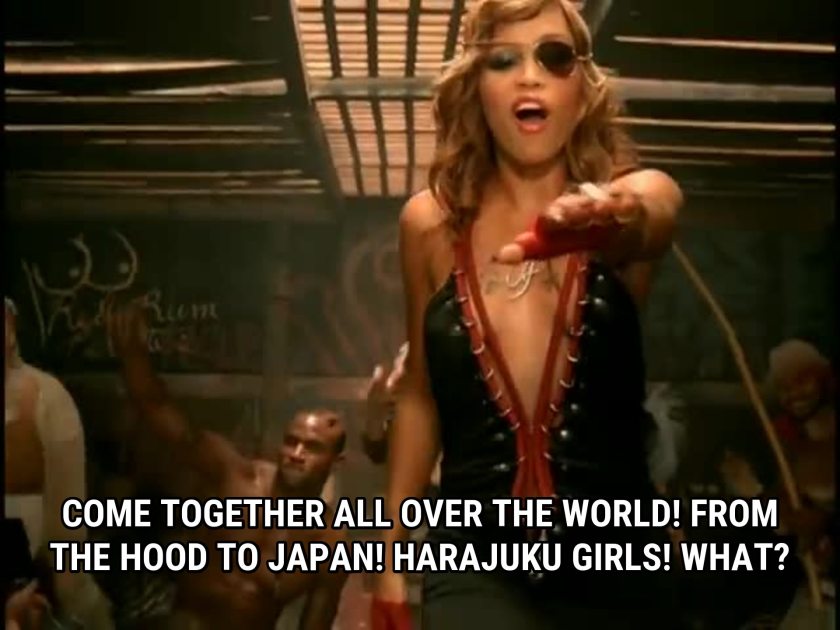

A recent example of cultural exchange would be within the musical genre “synthwave”, a re-emergence of a musical style from the 80s which was inspired by French house music. The more recent version of synthwave (also called outrun, retrowave and futuresynth) combines dreamy soundscapes, modern electronica, often combined with imagery and graphics of 80s video game and early 90s internet culture.

Synthwave was celebrated within the enclaves of niche internet subcultures in the mid 00’s, but after the release of the 2011 arthouse film triumph Drive—the genre has exploded (Observer Music, 2015). In turn, this cultural exchange can be seen with some of the newer hip hop artists in their approach to music. Synthwave has now been incorporated into mainstream (African American) hip hop culture by the likes of Frank Ocean, whilst the 80/90s house melodies, aesthetic and beats have found their way into the music of culture industry pawns like Katy Perry, (especially with her latest music and music video, ‘Bon Appetit’) and Carly Ray Jepson (Boy Problems)
A Self-perpetuating Cycle
Subculture contributes so much to main stream culture, because it is defined by it’s difference. The ultimate result is a self-perpetuating cycle, sub-culture takes cue from cultural context (which Byrne discussed), subverting or perverting the mainstream, this new take becomes popularised and consumed by mainstream pop culture and in turn, is commodified and regurgitated to the masses, fulfilling the rumblings of what arguably was already floating around in cultural consciousness, our internalise archeptypes. Mass music simply fills this hole, and makes it palatable for a broader audience with less niche taste, and sells it, in many instances back to the society that will eventually subvert it again.
The Independent Music Sector ♫
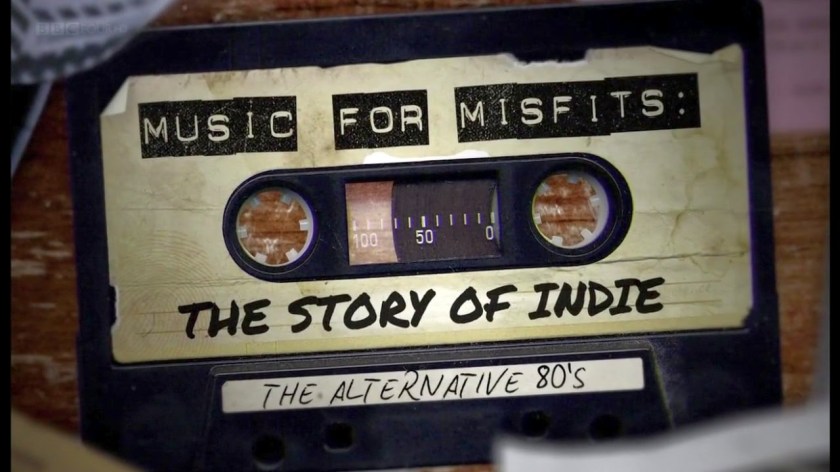
Adorno and Horkheimer (2002, pp. 94-95) suggest that we are living in a cultural industry, an industry that produces a standardised form of popular culture to appease the masses. Adorno and Horkheimer (2002, pp. 94-95) note that this standardised form of culture originally derived from the needs of the consumers and this is why we accept carbon copy content. “All mass culture under monopoly is identical” (Adorno and Horkheimer 2002, p. 95) they argue that these entertainment industries operate like industrial machinery, churning out popular culture by the masses. This machine like distribution follows a strict formula that has been tried and tested and eventually incorporated into every aspect of the entertainment industry. Adorno and Horkheimer (2002, p. 97) also note t hat differences in value do not represent a move away from this insatiable uniformity that has engulfed the media. They all follow a strict format, no matter the budget, and we as consumers have no say in the content we engage with. Adorno and Horkheimer (2002, p. 95) also argue that whilst the industry denies having a standardised form, it’s become blatantly clear based on the way in which they handle and distribute their content. Adorno and Horkheimer are right in suggesting that there is standardised formula in the creation of this cultural industry. However, having this knowledge also allows for the rise of a rebellion, otherwise known as The Independent Sector.
hat differences in value do not represent a move away from this insatiable uniformity that has engulfed the media. They all follow a strict format, no matter the budget, and we as consumers have no say in the content we engage with. Adorno and Horkheimer (2002, p. 95) also argue that whilst the industry denies having a standardised form, it’s become blatantly clear based on the way in which they handle and distribute their content. Adorno and Horkheimer are right in suggesting that there is standardised formula in the creation of this cultural industry. However, having this knowledge also allows for the rise of a rebellion, otherwise known as The Independent Sector.
Kruse (2010, p. 625) notes that the independent music scene gained momentum during the last two decades of the twentieth century. “Local independent rock and pop music formations enjoyed attention from the popular media and academics in the 1980s and 1990s” (Kruse 2010, p. 625) who sought to understand the rise of independent record labels and distribution. This rise was an apparent direct rejection of a standardised formula and industralisation of music. A shift began to occur during this time and the dynamics between major record companies and the independent sector began to shift. The industrialisation of music and its lack of freedom over creative content now had a direct competitor, creative freedom. The rise of the independent sec tor has continued to grow and manifest into what we know as indie music today. Independent music has never been so accessible; when the shift first began independent music could only be consumed in typically local scenes. However, with the rise of the digital age and social media, independent music is not only consumed and distributed in a more accessible manner, it has also become easier to create this content (Kruse 2010, p. 625-626). Kruse (2010) notes that the years since the “1980s and early 1990s, the internet has become a key player in the production, promotion, dissemination, and consumption of independent music” (Kruse 2010, p. 625). As internet opportunities for the discussion and sharing of independent music increase, so does the level of those participating in the creation of such content. Individuals can now connect with other content creators and access databases of sample music which they can then sample and manipulate to suit their content. Individuals now have access to inexpensive education content that teaches instrument, vocals, producing, lyric writing and other recording content allow more people to engage with music creation than ever before.
tor has continued to grow and manifest into what we know as indie music today. Independent music has never been so accessible; when the shift first began independent music could only be consumed in typically local scenes. However, with the rise of the digital age and social media, independent music is not only consumed and distributed in a more accessible manner, it has also become easier to create this content (Kruse 2010, p. 625-626). Kruse (2010) notes that the years since the “1980s and early 1990s, the internet has become a key player in the production, promotion, dissemination, and consumption of independent music” (Kruse 2010, p. 625). As internet opportunities for the discussion and sharing of independent music increase, so does the level of those participating in the creation of such content. Individuals can now connect with other content creators and access databases of sample music which they can then sample and manipulate to suit their content. Individuals now have access to inexpensive education content that teaches instrument, vocals, producing, lyric writing and other recording content allow more people to engage with music creation than ever before.
Adorno and Horkheimer (2002, pp. 94-95) are suggesting that we cannot escape the standardised popular culture that is created for the masses, but one could easily argue that independent sector is directly challenging this issue with content created by the masses. Independent music is now in the mainstream, musicians are now able to share their content without major record label backing. Consumers can now choose and create their content with ease, bypassing the ‘insatiable uniformity’ of the mass media.

References
Adorno, T & Horkheimer, M 1993, Dialectic of enlightenment, Continuum, New York; Georgetown University, viewed 6 May 2017,<http://faculty.georgetown.edu/irvinem/theory/Adorno-Horkheimer-Culture-Industry.pdf>.
Adorno, T & Horkheimer, M 2002, Dialectic of Enlightenment, Stanford University Press, California, viewed 15 May 2017, <https://web.stanford.edu/dept/DLCL/files/pdf/adorno_culture_industry.pdf>.
Blunden, A 2004, Bourdieu on Status, Class and Culture, Harvard University Press, viewed 10 May 2017, <http://home.mira.net/~andy/works/bourdieu-review.htm>.
Bourdieu, P 1984 , A Social Critique of the Judgment of Taste, trans. R Nice, Harvard University Press, Cambridge.
Byrne, D 2012, How Music Works, San Francisco, McSweenys.
Chan, TW & Goldthorpe, JH 2007, ‘Social status and cultural consumption’, in TW Chan (ed.) , Social Status and cultural consumption, Cambridge University Press, Cambridge.
Furze, B Savy, P Bryn RJ, Lie J (eds.) 2012, Sociology in today’s world, Cengage Learning, South Melbourne, Victoria.
Holze J 2005, ‘Aspect of high and low culture in the context of visual/cultural studies’, Otto von Guericke University, Magdeburg, viewed 10 May 2017,<https://ja.scribd.com/doc/41544564/Aspects-of-High-and-Low-Culture>.
Mack, RW & Merrian, AP 1960, ‘The Jazz Community’, Social Forces, vol.38, no.3, pp. 211-222.
Margolis, NM 1954, ‘A Theroy on the Psychology of Jazz’, American Imago: a Psychoanalytic Journal for the Arts and Sciences, vol. 11, no.3, p263-291.
Neuman, J 2015 , The Nostalgic Allure of Synthwave, Observer, viewed 4th May 2017.
Kruse, H 2010, ‘Local Identity and Independent Music Scenes, Online and Off’, Popular Music and Society, vol. 33, no. 5, pp. 625-639.
Takatsuki, Y 2003, ‘Japan grows its own hip-hop’, BBC News 17 December, viewed 4th May 2017.
Turley, A 2001, ‘Max Weber and the Sociology of Music’, Sociological Forum, vol. 16, no. 4, pp. 633-653.
Ulanov, B 1952, A History of Jazz Music in America, Viking Press, New York.
Weber, M 1946, From Max Weber Essays in Sociology, Oxford University Press, New York.
Witkin R 2003, Adorno on popular culture, Routledge, London, viewed 10 May 2017,<http://www.verlaine.pro.br/txt/witkin-adorno-pop-culture.pdf>.

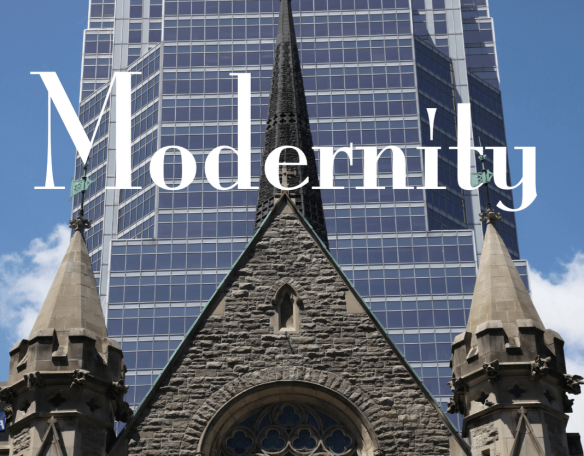





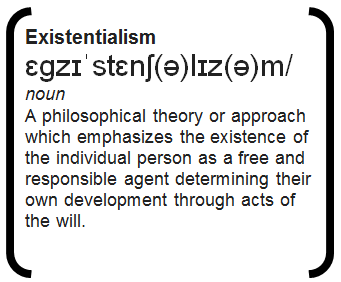 his literary career as a political journalist, though he has been described as a particularly unpolitical man. However, it is due to Camus’ first three novels (The Stranger, The Plague, and The Fall) and his two book-length philosophical essays (The Myth of Sisyphus and The Rebel) that he gained notoriety. In the former philosophical essay, Camus introduced the philosophical concept of the Absurd, which cemented his reputation in the literary world. This concept of the Absurd is what Camus saw as the contradiction between people’s desire to find meaning in life and the universe itself, which is completely meaningless.
his literary career as a political journalist, though he has been described as a particularly unpolitical man. However, it is due to Camus’ first three novels (The Stranger, The Plague, and The Fall) and his two book-length philosophical essays (The Myth of Sisyphus and The Rebel) that he gained notoriety. In the former philosophical essay, Camus introduced the philosophical concept of the Absurd, which cemented his reputation in the literary world. This concept of the Absurd is what Camus saw as the contradiction between people’s desire to find meaning in life and the universe itself, which is completely meaningless. the human need and the unreasonable silence of the world” (Albert Camus cited in Foley 2008, p. 5). Bowker (2014) claims that the general understanding of absurdity
the human need and the unreasonable silence of the world” (Albert Camus cited in Foley 2008, p. 5). Bowker (2014) claims that the general understanding of absurdity throughout this whole process but expresses frustration at the meaninglessness of his existence. In the moments before his execution, the main character accepts the human condition as something he can’t change. This novel echoes Camus thoughts as he believes it’s absurd “to try to know, understand, or explain the world, for he sees the attempt to gain rational knowledge as futile” (Aronson 2017) the character attempts to question the human condition before accepting that he will not get an answer. Aronson (2017) then asks “it is absurd to continually seek meaning in life when there is none, and it is absurd to hope for some form of continued existence after death given that the latter results in our extinction?” when we pull away the mask, we can see the absurdity of the human condition and we are left with no answers.
throughout this whole process but expresses frustration at the meaninglessness of his existence. In the moments before his execution, the main character accepts the human condition as something he can’t change. This novel echoes Camus thoughts as he believes it’s absurd “to try to know, understand, or explain the world, for he sees the attempt to gain rational knowledge as futile” (Aronson 2017) the character attempts to question the human condition before accepting that he will not get an answer. Aronson (2017) then asks “it is absurd to continually seek meaning in life when there is none, and it is absurd to hope for some form of continued existence after death given that the latter results in our extinction?” when we pull away the mask, we can see the absurdity of the human condition and we are left with no answers.



 in a mystical world full of spirits. In this world, there is an ‘onsen’ or Japanese bathhouse which represents a hierarchy in the labour force from the modernisation of Japan. After world war 2, when Japan became more open to foreign ideas, foreign foods, clothing, technology and others started to become part of Japanese life too, therefore to become more modern and industrialized Japan had to increase labour force. The boiler room, which is located in the basement of the onsen represents the Japanese labour force that is growing very quickly, and to keep up with this demand the labour force must create mass production with less physical labour. This is shown with the character ‘Kamaji’ who is half robo
in a mystical world full of spirits. In this world, there is an ‘onsen’ or Japanese bathhouse which represents a hierarchy in the labour force from the modernisation of Japan. After world war 2, when Japan became more open to foreign ideas, foreign foods, clothing, technology and others started to become part of Japanese life too, therefore to become more modern and industrialized Japan had to increase labour force. The boiler room, which is located in the basement of the onsen represents the Japanese labour force that is growing very quickly, and to keep up with this demand the labour force must create mass production with less physical labour. This is shown with the character ‘Kamaji’ who is half robo t and has six arms. He operates the boiler room by himself with the help of his ‘soots’, he represents the modernisation of the labour force – less physical labour and more use of efficient machines – therefore when Chihiro asks for a job he rejects her because physical labour is no longer needed. As contrast to the boiler room, at the top floor of the onsen is Yubaba (the boss) office, which draws a clear line on the levels of hierarchical status. This office filled with very grand and expensive ‘western’ things, it looks very rich and spacious, and also Yubaba’s clothes have a western influence. This creates a link between the west and riches and good economic status, and suggest that material goods can show ones status.
t and has six arms. He operates the boiler room by himself with the help of his ‘soots’, he represents the modernisation of the labour force – less physical labour and more use of efficient machines – therefore when Chihiro asks for a job he rejects her because physical labour is no longer needed. As contrast to the boiler room, at the top floor of the onsen is Yubaba (the boss) office, which draws a clear line on the levels of hierarchical status. This office filled with very grand and expensive ‘western’ things, it looks very rich and spacious, and also Yubaba’s clothes have a western influence. This creates a link between the west and riches and good economic status, and suggest that material goods can show ones status. Religion also plays a role in this film. The main religion in Japan is called Shinto, and this is portrayed throughout the movie. The onsen is the main place where the movie takes place and this represents a place of cleansing and purifying one’s self. A major theme of Shintoism is that overtime we become dirty or polluted and end up doing things poorly, therefore one must act in a way to wash away this pollution in order to purify ourselves. An example of this, is the scene in the movie when Chihiro helps to cleanse a ‘stink spirit’ (which is actually a river spirit that has been polluted over time) and returns it to a state of balance and purity, through this her kokoro (heart) also becomes purified. There is a quote by Miyazaki which says “In my grandparents’ times, it was believed that gods and spirits existed everywhere – in the trees, rivers, insects, walls, anything. My generation does not believe in this, but I like the idea that we should treasure everything because there is a kind of life to everything”. There is the suggestion that, though Chihiro, the ‘younger generation’ is not aware of these spiritual values that have constituted a large part of Japanese history- and so culture.
Religion also plays a role in this film. The main religion in Japan is called Shinto, and this is portrayed throughout the movie. The onsen is the main place where the movie takes place and this represents a place of cleansing and purifying one’s self. A major theme of Shintoism is that overtime we become dirty or polluted and end up doing things poorly, therefore one must act in a way to wash away this pollution in order to purify ourselves. An example of this, is the scene in the movie when Chihiro helps to cleanse a ‘stink spirit’ (which is actually a river spirit that has been polluted over time) and returns it to a state of balance and purity, through this her kokoro (heart) also becomes purified. There is a quote by Miyazaki which says “In my grandparents’ times, it was believed that gods and spirits existed everywhere – in the trees, rivers, insects, walls, anything. My generation does not believe in this, but I like the idea that we should treasure everything because there is a kind of life to everything”. There is the suggestion that, though Chihiro, the ‘younger generation’ is not aware of these spiritual values that have constituted a large part of Japanese history- and so culture.